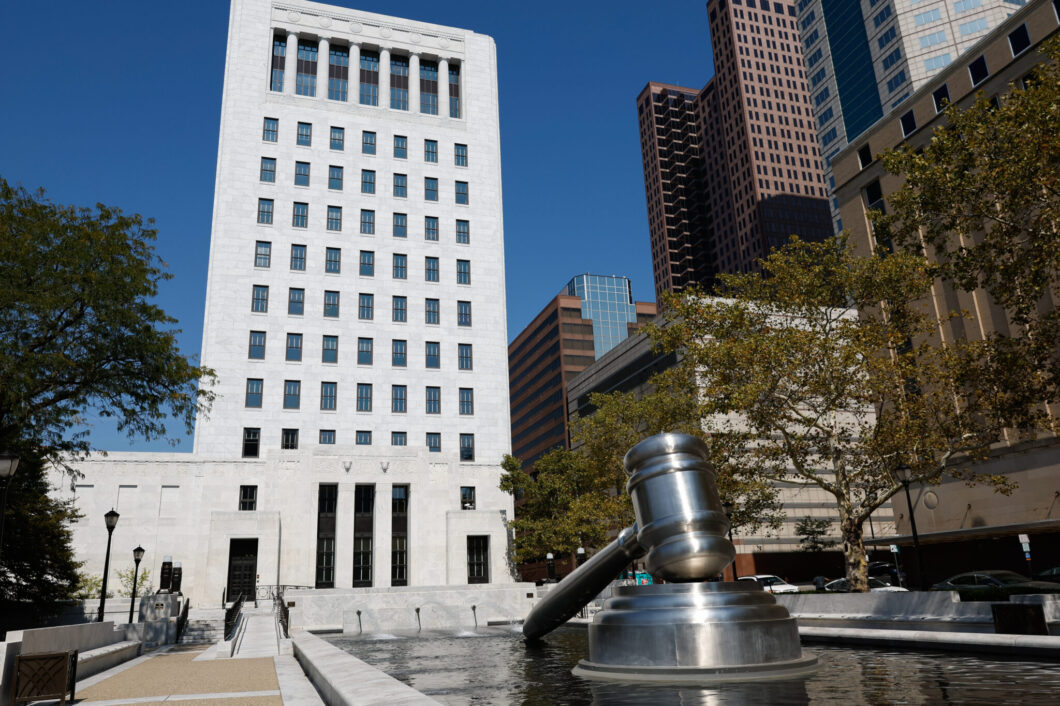Republicans on the Ohio Supreme Court ordered a few changes to GOP-crafted ballot language for the Issue 1 redistricting amendment. But they were largely OK with wording that the amendment’s backers called deceptive and wrong.
Ohioans will vote this fall on a proposed constitutional amendment to remove politicians from drawing congressional and statehouse maps and replace them with a 15-member citizen commission. In August, Republicans on a five-member panel called the Ohio Ballot Board approved ballot language for the amendment over the objections of the panel’s Democrats.
The group behind the amendment, Citizens Not Politicians, sued. The group argued that a procedural vote turned political when the GOP crafted ballot language to deceive voters and paint its measure in a bad light. Republicans, including Ohio Secretary of State Frank LaRose, defended the ballot language as a fair representation of what the constitutional amendment would do.
In a 4-3 decision on Monday, the Ohio Supreme Court ordered the Ohio Ballot Board to make some changes, but most of the GOP-written ballot language will remain. The panel must reconvene to fix two sections:
- to make clear that the Ohio Supreme Court can review more than proportionality, which is whether maps match the statewide voting preferences of Ohioans.
- to clarify that the public could express itself to the new redistricting commission.
But the Republican justices ruled there were no problems with the other language, including the title: “to create an appointed redistricting commission not elected by or subject to removal by the voters of the state.”
“The ballot title tells the voters, in condensed form, what they are being asked to vote on, and nothing in it is factually inaccurate because Ohio voters do not get a vote in the process of selecting or removing members of the proposed redistricting commission,” according to the court’s decision, which lists no specific author.
The current ballot language includes lines such as the proposed amendment “would establish a new taxpayer-funded commission of appointees required to gerrymander the boundaries of state legislative and congressional districts” and the measure would “limit the right of Ohio citizens to freely express their opinions to members of the commission.”
The Ohio Supreme Court ruled that the proposed amendment required certain partisan outcomes, writing: “What these rules require falls within the meaning of ‘gerrymander.'” Justice Pat Fischer, a Republican, agreed in a separate opinion: “(G)errymandering, though in a bipartisan manner, is absolutely ‘required’ under the proposed amendment.”
Ohio Supreme Court Justice Jennifer Brunner, a Democrat, wrote that Republicans should have gone further to fix the ballot language. Brunner wrote that the proposed amendment didn’t require gerrymandering and she slammed GOP members of the ballot board for their approved ballot language.
“The majority of the members of respondent Ohio Ballot Board either do not comprehend what the board may do when approving ballot language or have placed partisan interests above their oath-sworn duties to the people of Ohio,” Brunner wrote.
Ohio Supreme Court Justice Michael Donnelly, a Democrat seeking reelection this year, wrote that “everyone should be outraged by today’s decision, regardless of whether one thinks the proposed constitutional amendment is a wonderful idea, a terrible idea or anything in between.”
He referenced a recent Ohio Supreme Court decision where Republican justices ruled that a patron should be on guard against bones in boneless wings. “Given that the four members of this court in the majority today apparently think that the word ‘boneless’ means ‘you should expect bones,’ I’m sure it comes as no great surprise that they think that a constitutional amendment to “ban partisan gerrymandering” means to “require gerrymander[ing].’
If approved, Issue 1 would replace voter-approved redistricting measures from 2015 and 2018, which empowered a politician panel to draw statehouse districts and assist with the congressional map. The proposed measure would create a new commission of five Republicans, five Democrats and five independents to draw districts. These individuals could not serve as elected officials, political consultants, lobbyists or have other recent political ties.
The Ohio Ballot Board has a tight window to rewrite the ballot language before military and overseas voting begins on Friday.
Read the original article here.

